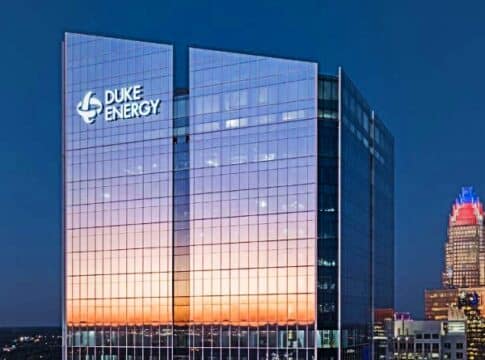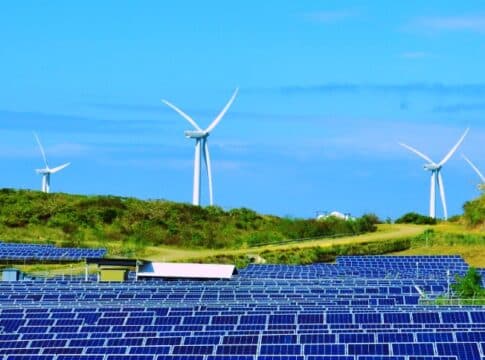Duke Energy to Invest $145B in Clean Energy Transition
Duke Energy released its annual climate report outlining its sustainability and net zero goals, performance, and progress, with the plan to invest $145 billion over the next ten years as it takes the lead in the clean energy transition.
In its Impact Report, one of America’s largest energy holding companies claimed to expand its 2050 net zero goal to cover over 95% of its footprint including Scope 2 and relevant Scope 3 emissions, making it one of the first in the sector to do so.
Duke Energy also said that its $145 billion clean energy investment will generate $250 billion in economic output. It will also support over 20,000 additional jobs created each year while generating more than $5 billion in additional property tax revenue over the next 10 years.
Katherine Neebe, Duke Energy’s chief sustainability and philanthropy officer, noted that:
“We’re pursuing federal funding and leveraging tax credits to lower customer costs for clean energy technologies and other aspects of the energy transition. Our balanced pace of change will enable a future that offers reliable, accessible and affordable energy for all customers and areas we serve.”
Duke Energy Carbon Emissions
Since 2005, electric utilities in the US have cut down the sector’s carbon footprint by about 40%.
The power sector has a major role in helping other sectors achieve their own net zero goals. And Duke Energy is ahead of the industry average, consistently decarbonizing to meet its climate goals.
The company boasts its investments as one of the largest clean energy transitions in the industry.
Duke plans to invest over $145 billion in capital between 2023 and 2032, and about 85% of that will support the clean energy transition and its net zero by 2050 goal.
$75 billion will be to modernize and strengthen the nation’s largest investor-owned electric grid.
The energy company also seeks to invest another $40 billion in zero-carbon power generation. These include nuclear, solar, wind and battery storage resources, as well as investing to extend the life of their carbon-free nuclear fleet.
Duke Energy has a diverse, clean generation portfolio.
In 2022, over 40% of its electricity generation was from carbon-free sources, renewables and nuclear. 42% was from lower-carbon natural gas, which emits about 50% as much CO2 as coal when burned. And about 17% was from higher-carbon coal and oil.
In sum, owned and purchased renewables are equal to about 11% of Duke Energy’s electricity generation.
For its operational footprint, the Fortune 150 company was able to achieve a 44% reduction in carbon emissions from electricity generation from 2005 through 2022. It is also well-positioned to exceed its Scope 1 2030 goal of a 50% emission reduction.
Last year, the energy firm expanded its second interim target of an 80% reduction in 2040. Below is the carbon emissions of Duke Energy for the past three years in comparison.
By addressing 95% of its Scope 1, 2, and 3 carbon emissions, Duke Energy is leading in decarbonizing the industry. It shows that the company is serious about slashing its footprint across its entire value chain. That includes emissions from raw materials through to business operations and down to customer end-use.
To put that ambitious goal in perspective, that involves more than 100 million metric tons of CO2e each year over 30 years until net zero.
For emissions beyond the company’s direct control (Scope 2 and 3 emissions), a third-party analysis set a goal of a 50% reduction by 2035 as part of its net zero targets.
Duke Energy’s Path to Net Zero
The energy firm believes that a diverse energy mix is key to reaching climate goals and transitioning to clean energy. It has the biggest planned coal retirement in the country, aiming to retire 16 GW by 2035, pending regulatory approval.
In line with the International Energy Agency (IEA) Net Zero Energy (NZE) scenario, analysis revealed a pathway for Duke to reach a net zero electric portfolio by 2035.
Under IEA’s scenario, electric utilities in developed countries need to continue to reduce emissions below zero. This will be through the use of CCUS – carbon capture, use, and storage – technologies for biogas or biomass-fired electric generation.
In the case presented in the chart, Duke Energy’s generation portfolio has to more than double in size by 2035, even with the retirement of its conventional fossil-fired assets. Along with that is the installation of over 15,000 MW of ZELFRs (dispatchable zero-carbon resources).
ZELFRs include new nuclear, gas turbines fueled by green hydrogen, CCUS, or long-duration storage.
Duke Energy and industry partners have applied for DOE funds for a front-end engineering design study to assess an integrated carbon capture and sequestration project at the firm’s facility in Edwardsport Indiana. The project’s demonstration of capturing carbon after combustion can be a vital step in the path to net zero emissions.
Another lever is expanding renewables. By 2035, Duke expects to have 30,000 megawatts (MW) of regulated renewables, including utility-owned renewables and renewables from purchased power agreements (PPAs).
The company will also decarbonize its natural gas business by focusing on methane detection and reductions. This plus the overall goal to reduce upstream emissions related to the purchased gas as well as downstream emissions due to customers’ use of the gas products sold.
The company has also been investing in carbon offset credits but it didn’t reveal how much it will purchase as part of its climate goals. It runs a voluntary program that allows customers to buy green “blocks” from Piedmont, Duke’s subsidiary. A block is a combination of environmental attributes from carbon credits and renewable natural gas.
In sum, here’s what Duke Energy’s road to 2050 net zero emissions looks like.
To achieve those goals, policies, technologies, consumer behaviors, and supply chains that don’t exist yet are developed almost immediately.
The post Duke Energy to Invest $145B in Clean Energy Transition appeared first on Carbon Credits.



